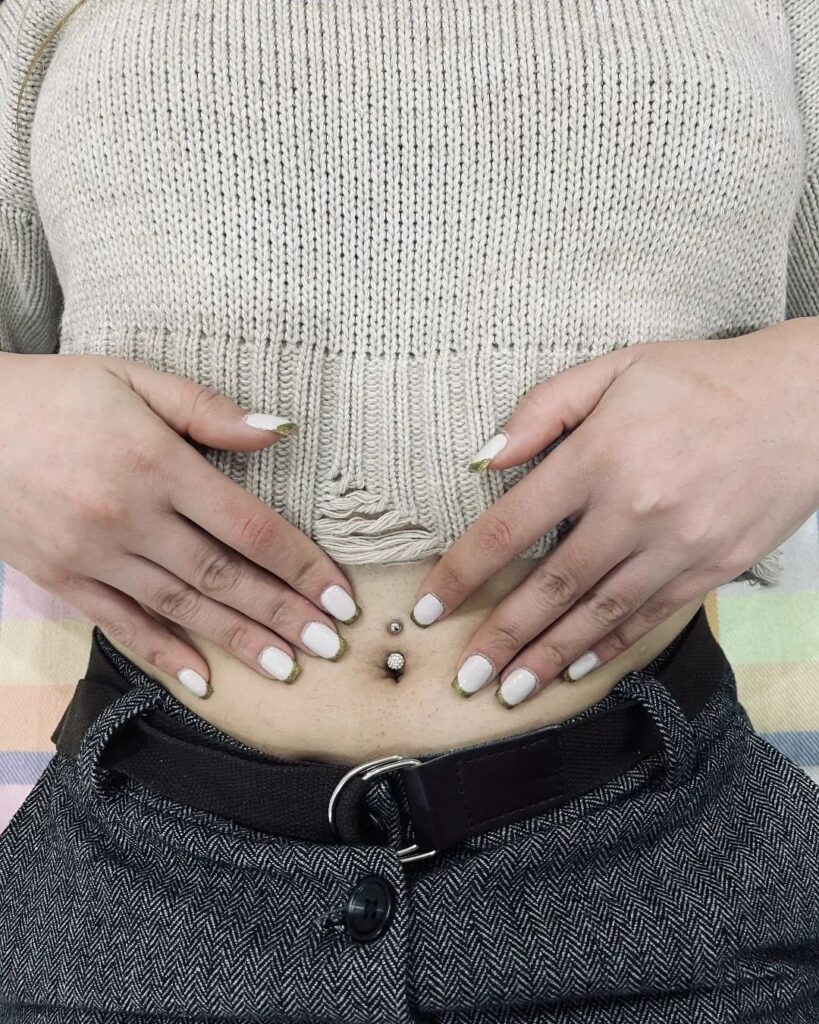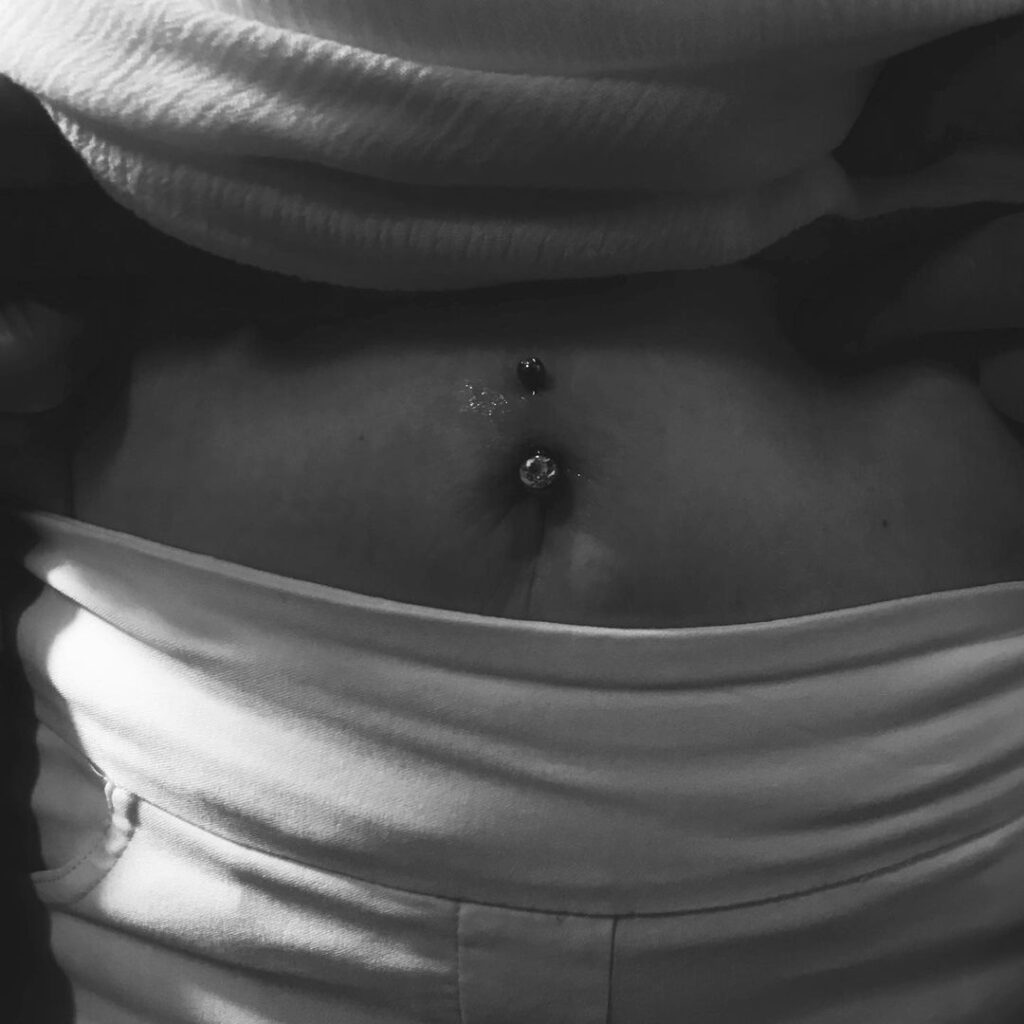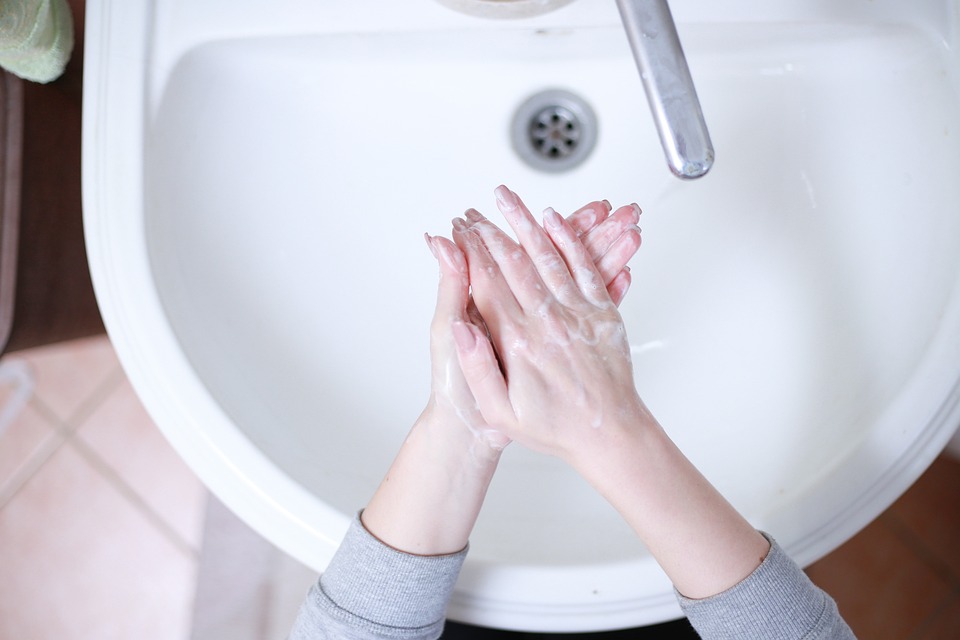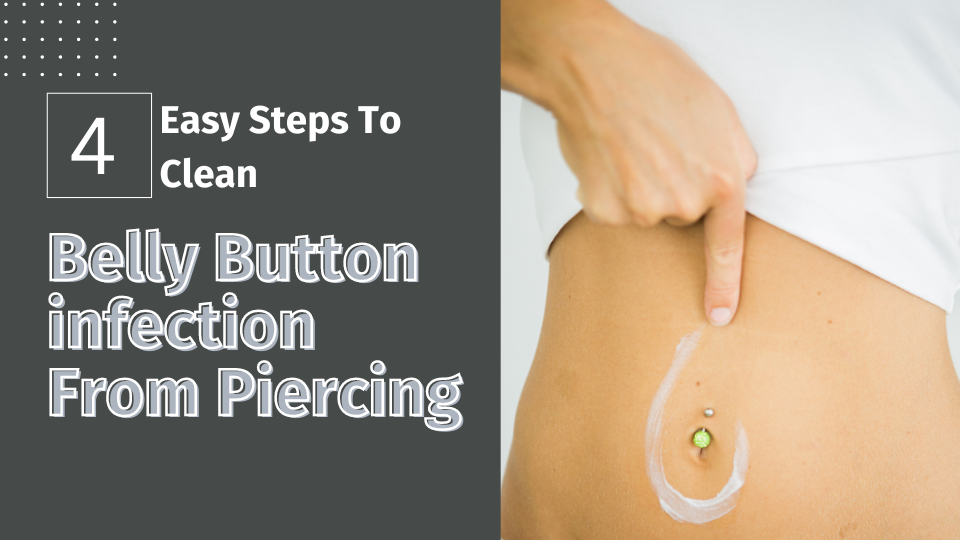
Because of the increasing popularity of belly button piercings, a rising number of individuals are developing belly button infection from piercing, which may lead to a wide range of complications or even tummy tuck. This article provides you with all the essential information you need to know, including the reasons why a belly button infection from piercing may get infected and the steps you can take to avoid this problem.
Table of Contents
What is Belly button infection from piercing

The belly button infection from piercing is a frequent habit among many females. However, the pierced belly button may sometimes get infected. This occurs when the piercing is improperly performed and the surrounding skin is not adequately cleansed. Additionally, other variables might lead to an infection.
One of these risks is insufficient hygiene after a navel piercing. It is essential that you do not share personal goods such as razors, toothbrushes, and other products with others. You should also always keep your hands clean because they can transmit germs from other people or places into your body if they are not washed frequently enough or if they have been in contact with an infected person’s hands or objects such as razors or toothbrushes that may contain bacteria that cause infections such as “belly button ring.”
If you see any swelling or redness around your belly button, consult your doctor immediately so that he can assess what form of therapy will be required to avoid any difficulties until it heals fully without giving you any more injury of the belly button infection from piercing.
Symptoms of belly button infection from piercing

Infections that result from having your belly button infection from piercing may be a major issue. In addition, they are one of the most prevalent forms of staph infections, which may afflict individuals of any age or background.
In most cases, infections are brought on by germs that are already present on the patient’s skin or in the patient’s nose or throat. There is a strain of staphylococcus called staphylococcus aureus that is carried by certain individuals. Staphylococcus aureus is an opportunistic pathogen, which means that it may cause life-threatening infections if it invades your body.
Belly button infection from piercing may result in a variety of symptoms, including:
- -Inflammation or edema in the region surrounding your belly button
- -A yellow or green discharge from the belly
- -Pain while pressing on the puncture site
- -Fever or shivering
- -Feeling queasy in the stomach (nausea)
How to clean infected belly button piercing

Your belly button is a sensitive region of your body, despite the fact that getting it pierced may be a fun and simple method to express who you are. In the event that you do not take proper care of it, it is possible for it to get infected, which is not only unpleasant but also potentially harmful. The following are some suggestions for keeping the piercing in your belly button clean:
- You should make every effort to maintain a clean and dry environment in the region around the piercing at all times. Because of this, bacteria will have a harder time establishing a colony in the region.
- After washing the area with soap and water, dry it with a clean towel or cloth by patting it dry in a gentle manner.
- Clean all of the jewelry you are wearing, including the ring or studs in your belly button, using a disinfectant that contains alcohol. After applying disinfectant, be sure to give your jewelry a thorough rinsing with warm water, and avoid using paper towels or anything else that can soak up the solution and leave it on the metal of your jewelry.
- If you suspect that you have an infection, contact your primary care physician right away, or go visit one in person; they will be able to give you with many treatment choices.
FAQs
How do you treat an infected belly button piercing?
Cleaning a belly button infection from piercing with warm water and soap is one way to treat the infection. There is also the option of using iodine solution or hydrogen peroxide. If you have sensitive skin, try cleaning your piercing with gauze or baby wipes every day for a few days until the infection clears up on its own. This should be done until the infection is gone.
Will a belly button piercing infection go away on its own?
This depends on what caused the infection in the first place—if it was just a dirty or poorly-healed piercing, then it should clear up quite fast. However, if the infection was caused by anything else, it may take longer to heal. If you have a staph infection or another form of bacterial illness that is more resistant, then it is possible that you may need to deal with this one for a bit longer before it goes gone entirely.
How do I know if my belly button piercing is infected?
If your belly button infection from piercing itches, aches, gets red and swollen, or all of the above, then it most certainly has an infection. If you have any of these symptoms, you should get your piercing checked out by a medical professional as soon as possible.
What does an infected belly piercing look like?
A belly button infection from piercing might appear like a number of different things. If it hasn’t progressed too far, it may seem as little more than a tiny pinhole in your skin; in other cases, it may not even be noticed at all. If the infection has reached a more advanced stage, you may see pus or blood flowing out of the hole, or you may notice redness surrounding the region. Both of these symptoms indicate that the infection is spreading.
Conclusion
The act of getting one’s belly button pierced is one of the activities that carries the risk of contracting an infection. This has the potential to induce at least two distinct kinds of illnesses in different people. One of them is called Mycobacterium avium subspecies paratuberculosis, and it is caused by an organism called Mycobacterium avium.
Patients who have previously suffered from an infection of the respiratory tract are more likely to contract this form of tuberculosis, and it can typically be found in the crook of the arm or behind the ear. Staphylococcus aureus, which is more often linked with skin infections, is the cause of the other form of infection. However, if you have symptoms such as discomfort or irritation, you should make an appointment with a medical professional as soon as you can.
Both infections are notoriously difficult to treat. In case you are curious about whether or not you need to take antibiotics for this kind of ailment, the answer is yes. Cellulitis and staphylococcal infections of the lower respiratory tract are two of the conditions that the antibiotic chloramphenicol has been used to treat.

